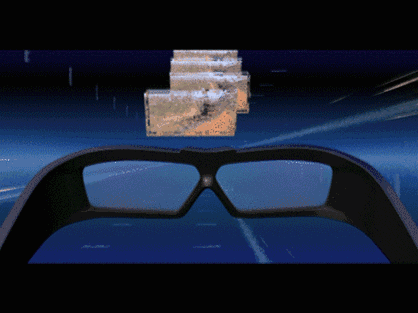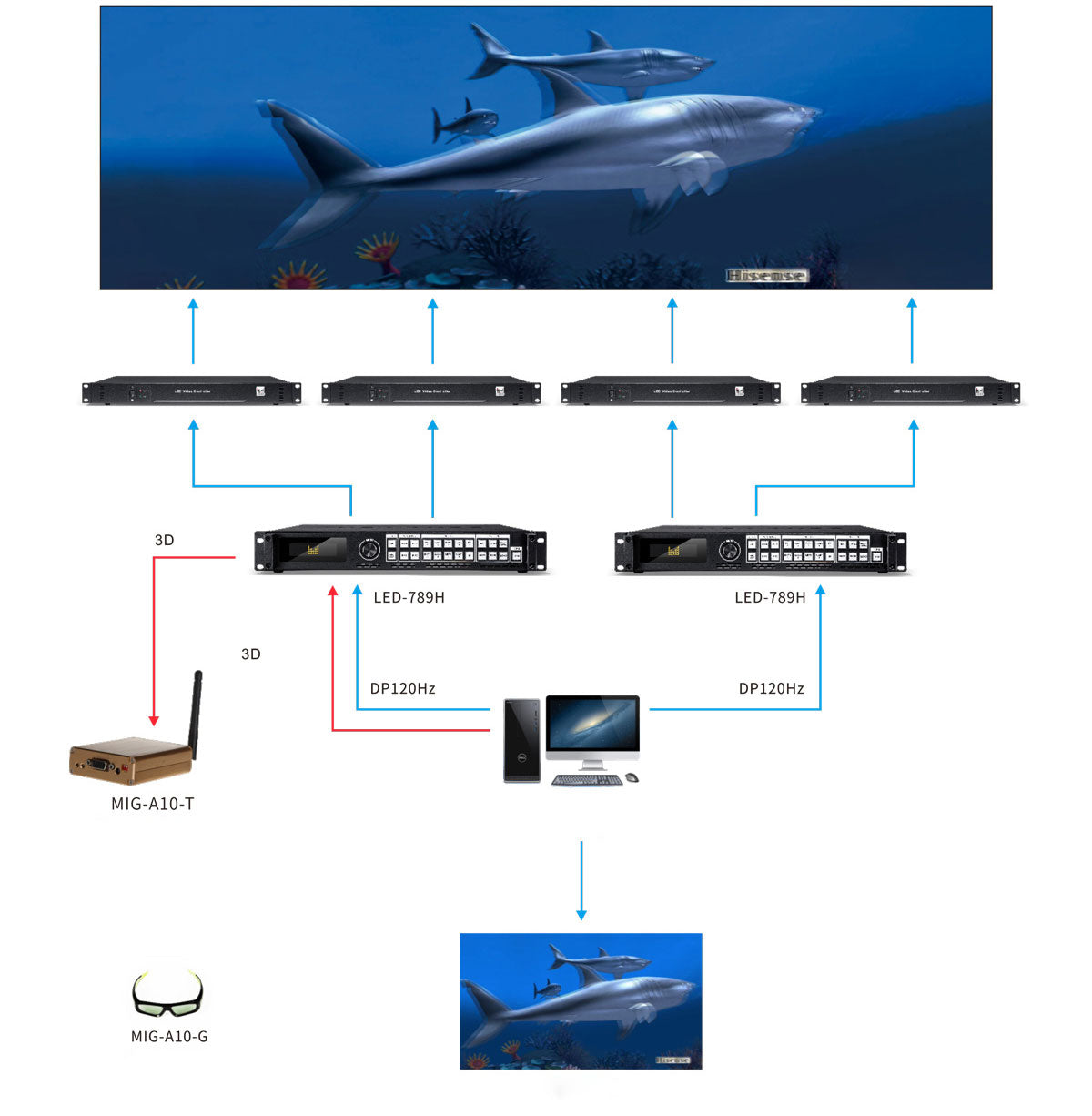LED-789H/ 789H Pro 3D LED video processor
LED-789H/789H Pro is specially designed to solve the problem of 3D signal synchronization, the original 3D sync module, connects the 3D sync signal from the graphics card to the processor, the processor outputs to the 3D emitter, and adjusts the parameters of 3D Sync to solve the problem caused by the delay, ensuring that the user's left and right eyes can see the corresponding LED screen at the correct time.
Functions and features: 1, large resolution input/output 120Hz point to point display, multiple machines can be spliced between.
2, with the 3D graphics card output of the 3D signal, do synchronization of the function of adjustment, to ensure that the switch of the 3D glasses and LED screen display image match.
3. No need for a costly special 3D transmitter card to support 120Hz input and output.
3D imaging principle: due to the human eye in viewing an object, the two eyes see different angles, the formation of the image is not exactly the same, so the two images in the brain after the synthesis can distinguish between the front and back of the object, the distance, thus generating a three-dimensional vision.
The LED screen 3D introduced in this paper is based on the imaging principle of the human eye and design, using active shutter 3D technology, the technology is mainly by increasing the refresh rate of the screen to 120Hz to achieve the 3D effect, the image according to the refresh rate into two, the formation of the left eye and right eye of the two sets of images, continuous staggered in the LED display, while the corresponding infrared signal transmitter will be synchronized control of the shutter 3D glasses left and right lens switch, so that the left and right eye can see the corresponding screen at the correct time, so as to present a three-dimensional image with a sense of depth in the brain.
The advantage of this technology is the ability to maintain point-to-point video resolution, and let the left and right eyes both receive 60Hz images, easily allowing users to enjoy a continuous and flicker-free 3D effect, and without playing a specific 3D film source, normal 2D display, without the need to switch devices.

However, in the actual application process, due to the video processing equipment, LED screen system there are certain signal processing delay, which will cause the LED screen shows the picture than the actual video source slow a few frames. For example: 3D video source 1 second there are 120 frames, 1,3,5,7 ... displayed for the left eye frame image, 2,4,6,8 ... displayed for the right eye frame image, assuming that the video source plays to the left eye frame 7, when the 3D glasses left eye open, but in fact, after the video system processing delay, LED The screen is now displaying the 4th frame of the image of the right eye, which causes the left eye to fail to see the correct image, if there is a non-integer frame delay, this kind of problem is even more incalculable. This is the so-called LED screen shows the image and the 3D glasses switch does not match, thus no 3D effect or 3D flicker.





